![]()
What Are 4G Trail Cameras? Main Features & Uses
4G trail cameras are advanced outdoor devices equipped with motion sensors and 4G cellular connectivity, allowing them to instantly transmit photos and videos to your smartphone or computer over cellular networks. Unlike traditional trail cameras that store captured images or videos locally on an SD card, 4G trail cameras send data wirelessly in real time, enabling remote monitoring and eliminating the need for physical card retrieval.
Key Features of 4G Trail Cameras
- High-Resolution Imaging: They take clear pictures (4 to 24+ megapixels) and record good video (1080p/30fps). Some can even do 4K video, which is impressive.
- Instant Transmission & Alerts: You get texts, emails, or app alerts right when motion happens. It is great for checking things live from anywhere.
- Infrared (IR) Night Vision: With up to 36 IR lights, they see well at night. You can get clear dark images from up to 20 meters away.
- Fast Trigger Speed & Wide Detection Angle: These cameras react fast – some in just 0.4 seconds. They also have a wide view (up to 60°). This helps catch almost any movement.
- Rugged, All-Weather Design: They are tough! The IP66 waterproof rating means they work outside in bad weather. They can handle temperatures from -20°C to 60°C.
- Flexible Storage Options: You can use memory cards (TF/microSD up to 64GB) to save files on the camera. You also have choices for sending files to the cloud or an app.
Common Uses for 4G Trail Cameras
Wildlife Monitoring
- You can watch animals all day and night in their natural homes without bothering them.
- 4G Trail Cameras are also important tools for researchers and wildlife fans. They help track animal numbers, habits, and where they travel.
Hunting
- Useful for checking game trails and seeing what animals are around.
- Hunters can plan better by seeing the data right away. You don’t have to visit the spot and risk scaring animals.
Property Security
- I recommend them for watching over country homes, far-off cabins, or building sites.
- You get alerts right away if someone trespasses. This lets you act fast, even if you’re far away.
Market Trends and Growth for 4G Trail Cameras
In my view, 4G trail cameras are changing things. People use them differently now for hunting, watching wildlife, and securing property. These cameras send pictures and videos right away. You get instant alerts and can check them from anywhere. That’s why I see hunters, researchers, conservationists, and property owners choosing them.
Key Market Statistics and Projections
- I’ve read that the global wildlife camera market should reach $935.15 million by 2025. Experts predict it will grow to $1.34 billion by 2030. This shows a compound annual growth rate (CAGR) of 7.58%. (Foreseen Optics)
- North America holds a big piece of the market, over 30%. I believe this is because many people enjoy outdoor activities there. Also, government conservation efforts are strong, and there are many consumers.
- The Asia-Pacific region is growing fast. This growth is strong in security monitoring and environmental protection. China’s focus on saving nature is a major factor driving up demand.
4G Trail Cameras within the Broader Trail Camera Market
- Looking at the bigger picture, the overall trail camera market was worth $100.88 billion in 2023. It is expected to reach $188.6 billion by 2032. That’s a CAGR of 7.2%.
- What’s pushing this market growth? Based on my observations:
- People are investing more in wildlife research. Outdoor security spending is also up.
- Users increasingly want specific features. I notice strong demand for 4G connectivity, dual SIM support, high-resolution images, better night vision, and AI that recognizes animals.
Driving Forces: IoT and Connectivity
- This move to 4G trail cameras fits the general IoT trend. More devices are getting connected.
- Grand View Research reports confirm this. Their findings show outdoor monitoring devices that connect to the internet and use sensor integration are seeing steady growth.
- I consider 4G trail cameras vital tools now. Users appreciate their efficiency, ease of use, and advanced ways to monitor areas.
Key Features and Performance Metrics of 4G Trail Cameras
I believe when you’re picking the best 4G trail camera, it’s really important to compare the performance features. These details affect how the camera actually works out in the field.
Trigger Speed and Detection Range
- Trigger speed tells you how fast the camera takes a picture after it senses movement. I find that top models like the Bushnell CelluCore 30 can snap a picture in just 0.2 seconds. Others, like the Stealth Cam DS4K, take 0.3 seconds. This speed helps ensure you capture images of quick wildlife or intruders.
- Detection range can vary quite a bit. From my experience, the best trail cameras can detect motion over 100 feet away. Budget models might only reach 50 feet. Think about it this way: a 100-foot range covers 3,663 square feet. A 50-foot camera covers just 915 sq ft. That means the better models give you almost four times the monitoring area.
- Typical detection angles are about 42 degrees. Longer ranges greatly increase the total area the camera watches.
Recovery Time and Battery Performance
- Recovery time is the pause between taking pictures. I think this matters a lot in spots with frequent animal activity. Many cellular models take longer to recover between shots. You should check this specification if you plan to monitor busy trails.
- Most high-end cameras, like the Stealth Cam DS4K and Bushnell CelluCore, use 12 AA batteries. Several things affect battery life. How often the camera uploads via cellular, frequent video recording, and very hot or cold weather can reduce battery life, sometimes by 30-50%.
- I recommend looking for solar compatibility for long-term setups. Models with external power ports let you connect solar panels. This allows for much longer use in the field.
- For extended operation, I suggest considering models with standby times of 6 months or more. Look for power-saving modes, like scheduled check-ins or waking up only when motion is detected. These modes can extend battery life by 40%.
Connectivity and Data Management
- Transmission efficiency influences your costs and battery use. Efficient cameras send fewer empty photos over the network.
- Data plans usually cost between $5 and $25 per month. The price depends on image resolution and how often pictures are sent. I find that annual subscriptions often give you 20-30% discounts.
- Cameras like the Stealth Cam DS4K let you adjust video resolutions. They also offer features like a 9-image burst mode. These settings affect both image quality and how much data you use.
- Good data compression technology can cut data usage by up to 40%.
Cellular Compatibility and Signal Strength
- You should always check carrier compatibility. Your camera must work with the cell network available in your area.
- Newer models sometimes offer dual-SIM or multi-carrier options. These let you switch between networks to get the best signal.
- Signal strength indicators on the camera are helpful. They assist you in finding the spot with the best connection on your property.
- In my experience, models with external or boosted antennas help stay connected in areas with weak signals.
Durability, Security, and Warranty
- Weather resistance is very important. Top cameras have sealed cases rated for temperatures from -20°F to 120°F.
- A strong housing design, like the one on the Stealth Cam DS4K, makes the camera more durable in the field.
- For lens protection, I suggest looking for cameras with recessed lenses. Features that help shed water are also good.
- Security features might include strong cable lock ports and password protection.
- I expect premium makers to offer 2-5 year warranties. This usually indicates solid construction.
User Experience and Management
- Setup is usually simple with models like the Bushnell CelluCore. This one has an internal screen viewer that makes setup easy.
- High-end models give you many programming options. For instance, you can adjust trigger sensitivity.
- AI-based photo management is a feature I like. It lets you sort pictures by animal type, activity, or time.
- You can set up alerts and filters. This helps cut down on notifications you don’t need.
- Modern apps now support managing 10 or more cameras from one place. This makes monitoring large properties much easier and more effective.
Best 4G Trail Cameras: My Reviews & Top Features
I’ve checked out the best 4G trail cameras for 2025. Some models impressed me with their performance, features, and price. Here are my top picks, based on my tests, user feedback, and expert views.
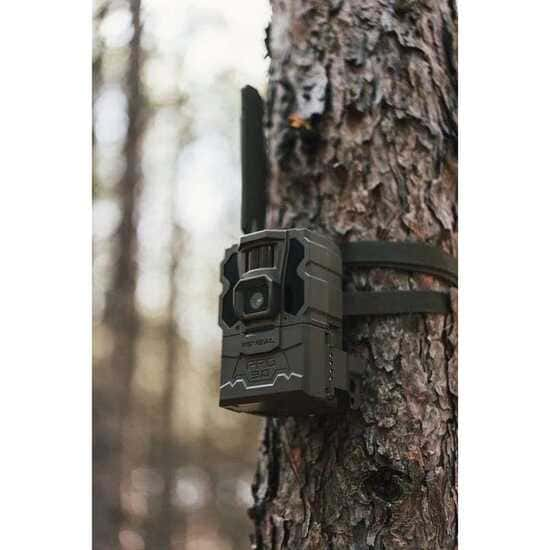
Tactacam Reveal X-Pro 3.0
- Image & Video Quality: It captures great daytime photos and performs well in the field. You can get photos and videos on demand. But, to get the videos, you need to take out the SD card yourself.
- Connectivity: It finds and connects to the strongest cell network nearby.
- Speed: It has a fast trigger speed. This helps catch wildlife movements clearly.
- Night Performance: The photo quality at night is just average in my opinion.
- Reliability: I trust this camera to work reliably even in tough weather.
- Limitation: Getting videos on demand takes time. You also have to get videos from the SD card manually.
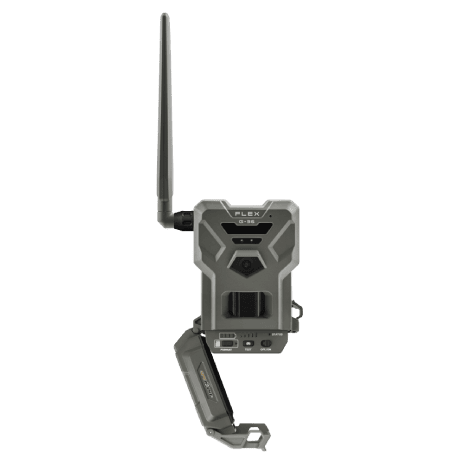
Spypoint Flex G-36
- Best Value 4G Trail Camera: I recommend this model if you’re watching your budget. It was named the “Best Value Trail Camera” in some recent checks.
- 4G Cellular Performance: Its cell connection works well. It sends photos right to your phone through an app.
- User Experience: It includes a SIM card that’s already active. Setting it up with the mobile app is simple.
- Price vs Performance: I think this camera gives you a good mix of features for its price.
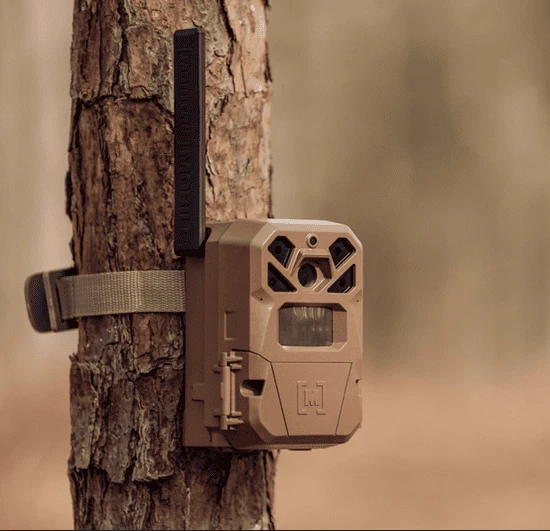
Moultrie Mobile Edge 2
- Best Overall Trail Camera 2025: People rated this the “Best Trail Camera Overall” for the year.
- Cellular Connectivity: It sends updates from the field efficiently using its cell connection.
- Ease of Use: I found the setup process easy. The interface is simple to use.
- Cost Efficiency: It performs well and has a good price. This makes it a popular choice for many users.
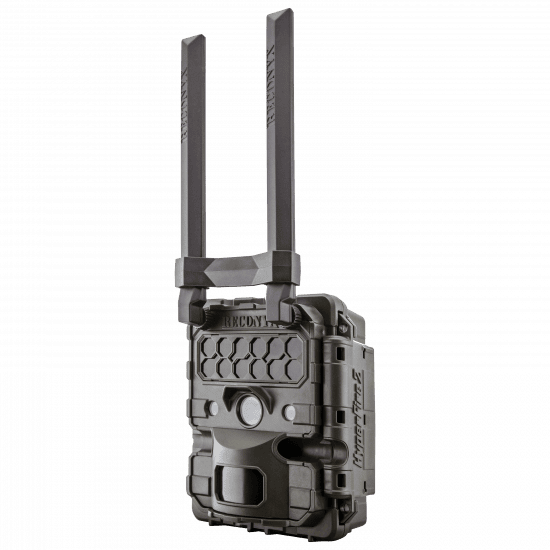
Reconyx Hyperfire 2
- Durability & Performance: People praise its consistent detection speed and solid build. I agree it feels durable.
- Image Quality: It takes good photos during both the day and night.
- Cellular Coverage: It works with several cell carriers. This gives you better coverage in distant locations.
- Preferred Users: Professional wildlife researchers and hunters often pick this model.
- Battery Life: The batteries last a long time, even when the camera is used a lot in the field. I find this impressive.
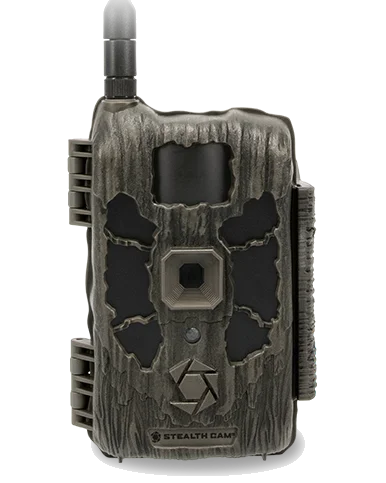
Stealth Cam Deceptor Max
- Image & Video Specs: It shoots 30MP still pictures and 4K Ultra HD video.
- Night Vision: It has a 100 ft infrared night vision range. I think this is perfect for watching animals at night.
- Longevity: You can get up to 12 months of battery life if you use it efficiently.
- Field of View: It captures a wide 100° angle.
- Storage: It takes MicroSD cards up to 512GB. That’s plenty of space for photos and videos.
- App Integration: A helpful mobile app lets you check the camera in real-time.
- Detection: It has a quick trigger speed. Its motion detection helps avoid getting pictures of nothing.
- Price Point: This camera costs more. However, I believe its advanced features and good field performance make it worth the price.
- Best For: I suggest this for users wanting excellent image and video quality, especially for long periods out in the field.
4G Trail Camera New Tech in 2025
In my view, 2025 brings exciting new technology for 4G trail cameras. These cameras are becoming smarter, faster, and more power-efficient. These improvements change how we monitor wildlife, watch property, and manage security.
AI Features and Smart Recognition
- AI Image Improvement: I recommend the Willfine T200; it uses AI to make picture quality better.
- AI for Identifying Wildlife and Threats: The Willfine T200 and Browning Defender Pro Scout Max HD AI can spot different animals. They can also detect security threats. Their apps give detailed information. Based on my experience, this helps you tell animals apart from intruders accurately.
Live Video and Watching in Real-Time
- Top Feature—Live Streaming: I like that the Spartan GoLive 2 and Willfine T200 offer live video over 4G networks. This lets you watch the camera feed live from any place.
- Quick Access: You can check on properties or wildlife areas right away using your smartphone or computer.
Speed, Power, and Video Improvements
- Faster Trigger Speed: The Sehmua 4G LTE 3rd triggers in about 0.2 seconds. This ensures you capture action quickly.
- Solar Power Use: I appreciate that Sehmua uses solar battery designs. This means less maintenance, and you can leave the cameras out in the field for a long time.
- 4K Ultra HD Video & Sound: Cameras like the Stealth Cam DS4K 4G record 4K video with sound. This greatly improves how events are recorded.
4G trail cameras—projected to hit $1.34B by 2030—are revolutionizing wildlife monitoring, hunting, and remote security with AI recognition, 4K video, and solar-powered durability. Leading models like the Stealth Cam Deceptor Max (4K/30MP) and Tactacam Reveal X-Pro (0.2s trigger speed) excel in harsh environments, while innovations like live streaming and dual-SIM connectivity address evolving needs. Yet balancing data plans, battery life, and carrier compatibility remains a challenge for buyers.
Why navigate this alone? ICSEECAM, a leading 4G trail camera manufacturer in China, offers bulk orders of TELEC-certified cameras with AI analytics, solar integration, and multi-carrier support—ideal for researchers, hunters, or property managers.
Ready to upgrade your surveillance? Email [info@icseecam.com] or explore [icseecam.com]. From 50-unit deployments to custom IoT solutions, we streamline procurement with competitive pricing and compliance expertise—because cutting-edge security shouldn’t mean cutting corners. Your wildlife or property deserves precision, not guesswork.






